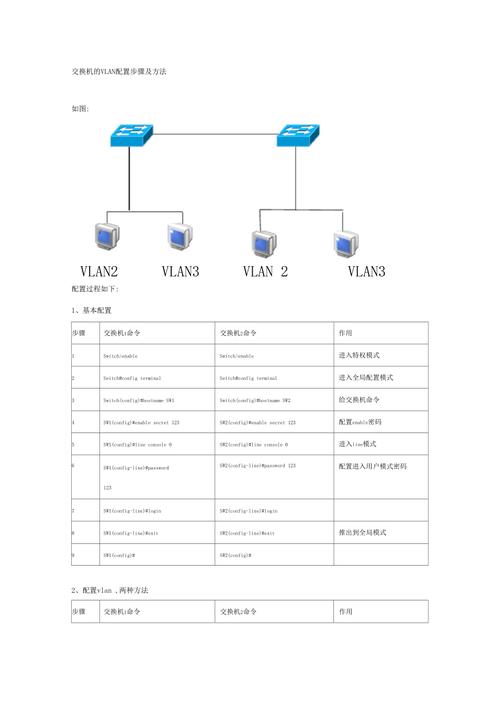淮海能源车,绿色出行新潮流,引领未来出行革命
随着全球气候变化和环境问题日益严重,绿色出行成为全球共识。我国政府高度重视新能源汽车产业的发展,将其作为国家战略。淮海能源车作为新...
扫一扫用手机浏览
上一篇文章中,我们讲述了双防火墙的根基设置装备摆设,也便是应用心跳线设置装备摆设防火墙的HRP,产生故障的时刻,主动切换。
因为焦点互换机还没设置装备摆设完成,以是也未便测试,本日这篇文章会完结,以是后面会有故障测试的截图。
照料到没看上一篇文章的读者,照样要把拓扑图贴一下,便于文章的浏览。

重申一下,上图中,AR1代表运营商双出口收集,事实上并不存在这台装备;而且,银行也并没有采纳PPPOE链路,只是为了趁便展现一下PPPOE的设置装备摆设罢了。
两台华为的防火墙,fw1为主,fw2为备;两台华为焦点互换机,没有采纳堆叠技术,而是采纳VRRP技术进行设置装备摆设。
一、焦点互换机的根基设置装备摆设
[SW1]int Eth-Trunk 12
[SW1-Eth-Trunk12]mode lacp-static //两台焦点互换机设置装备摆设eth-trunk,而且设定聚合模式
[SW1-Eth-Trunk12]trunkport GigabitEthernet 0/0/2 to 0/0/3
[SW1-Eth-Trunk12]q
[SW1]vlan batch 10 20 100 //创立VLAN
[SW1]port-group group-member Eth-Trunk 12 GigabitEthernet 0/0/1 g0/0/4 g0/0/5
[SW1-port-group]p l t //收集装备之间的衔接接口设置装备摆设为trunk模式
[SW1-port-group]p t a v a //容许所有VLAN经由过程
[SW1-port-group]quit
[SW1]int g0/0/6
[SW1-GigabitEthernet0/0/6]p l a //6口和7口设置装备摆设为access模式,而且划在VLAN100内
[SW1-GigabitEthernet0/0/6]p d v 100
[SW1-GigabitEthernet0/0/6]q
[SW1]int g0/0/7
[SW1-GigabitEthernet0/0/7]p l a
[SW1-GigabitEthernet0/0/7]p d v 100
[SW1-GigabitEthernet0/0/7]q
焦点2的设置装备摆设,根本上差不多,就不再反复了,下面两台接入层的互换机,也很简单
二、接入互换机的根基设置装备摆设
[SW3]vlan batch 10 20 100
[SW3]port-group group-member e0/0/1 e0/0/2
[SW3-port-group]p l t
[SW3-port-group]p t a v a
[SW3-port-group]q
[SW3]int e0/0/3
[SW3-Ethernet0/0/3]p l a
[SW3-Ethernet0/0/3]p d v 10
[SW3-Ethernet0/0/3]q
[SW4]vlan batch 10 20 100
[SW4]port-group group-member e0/0/1 e0/0/2
[SW4-port-group]p l t
[SW4-port-group]p t a v a
[SW4-port-group]q
[SW4]port-group group-member e0/0/3 e0/0/4
[SW4-port-group]p l a
[SW4-port-group]p d v 20
[SW4-port-group]q
三、互换机设置装备摆设MSTP和VRRP
[SW1]stp mode mstp //切换为mstp模式,应该是默认值,稳妥起见,照样输入一遍吧
[SW1]stp region-configuration
[SW1-mst-region]region-name huawei
[SW1-mst-region]revision-level 1
[SW1-mst-region]instance 1 vlan 10 100 //sw1主要跑vlan10和vlan100的数据流量
[SW1-mst-region]instance 2 vlan 20
[SW1-mst-region]ac region-configuration
[SW1-mst-region]quit
[SW1]stp instance 1 root primary
[SW1]stp instance 2 root secondary
[SW1]int g0/0/6 //6和7接口是衔接电脑和服务器,以是设置为边沿端口,加速STP收敛
[SW1-GigabitEthernet0/0/6]stp edged-port enable
[SW1-GigabitEthernet0/0/6]int g0/0/7
[SW1-GigabitEthernet0/0/7]stp edged-port enable
[SW1-GigabitEthernet0/0/7]q
MSTP配完了,紧接着设置装备摆设VRRP
[SW1]int vlan 10
[SW1-Vlanif10]ip add 192.168.10.1 24
[SW1-Vlanif10]vrrp vrid 1 virtual-ip 192.168.10.254
[SW1-Vlanif10]vrrp vrid 1 priority 120
[SW1-Vlanif10]quit
[SW1]int vlan 20
[SW1-Vlanif20]ip add 192.168.20.1 24
[SW1-Vlanif20]vrrp vrid 2 virtual-ip 192.168.20.254
[SW1-Vlanif20]q
继续设置装备摆设DHCP Server
[SW1]dhcp enable
[SW1]ip pool VLAN10
[SW1-ip-pool-vlan10]network 192.168.10.0 mask 24
[SW1-ip-pool-vlan10]excluded-ip-address 192.168.10.1 192.168.10.10
[SW1-ip-pool-vlan10]gateway-list 192.168.10.254
[SW1-ip-pool-vlan10]dns-list 114.114.114.114
[SW1-ip-pool-vlan10]q
[SW1]int Vlanif 10
[SW1-Vlanif10]dhcp select global
[SW1-Vlanif10]q
[SW1]ip pool VLAN20
[SW1-ip-pool-vlan20]network 192.168.20.0 mask 24
[SW1-ip-pool-vlan20]excluded-ip-address 192.168.20.1 192.168.20.10
[SW1-ip-pool-vlan20]gateway-list 192.168.20.254
[SW1-ip-pool-vlan20]dns-list 114.114.114.114
[SW1-ip-pool-vlan20]q
[SW1]int vlan 20
[SW1-Vlanif20]dhcp select global
[SW1-Vlanif20]q
[SW2]stp region-configuration
[SW2-mst-region] region-name huawei
[SW2-mst-region] revision-level 1
[SW2-mst-region] instance 1 vlan 10 100
[SW2-mst-region] instance 2 vlan 20
[SW2-mst-region] active region-configuration
[SW2]stp instance 1 root secondary
[SW2]stp instance 2 root primary //sw2主要跑vlan20的数据流量
[SW2]int vlan 10
[SW2-Vlanif10]ip address 192.168.10.2 24
[SW2-Vlanif10]vrrp vrid 1 virtual-ip 192.168.10.254
[SW2-Vlanif10]q
[SW2]int vlan 20
[SW2-Vlanif20]ip address 192.168.20.2 24
[SW2-Vlanif20]vrrp vrid 2 virtual-ip 192.168.20.254
[SW2-Vlanif20]vrrp vrid 2 priority 120
[SW2-Vlanif20]q
[SW2]ip pool vlan10
[SW2-ip-pool-vlan10] gateway-list 192.168.10.254
[SW2-ip-pool-vlan10] network 192.168.10.0 mask 255.255.255.0
[SW2-ip-pool-vlan10] excluded-ip-address 192.168.10.1 192.168.10.10
[SW2-ip-pool-vlan10] dns-list 114.114.114.114
[SW2]ip pool vlan20
[SW2-ip-pool-vlan20] gateway-list 192.168.20.254
[SW2-ip-pool-vlan20] network 192.168.20.0 mask 255.255.255.0
[SW2-ip-pool-vlan20] excluded-ip-address 192.168.20.1 192.168.20.10
[SW2-ip-pool-vlan20] dns-list 114.114.114.114
[SW2-ip-pool-vlan20]q
[SW2]dhcp enable
[SW2]int vlan 10
[SW2-Vlanif10]dhcp se gl
[SW2-Vlanif10]q
[SW2]int vlan 20
[SW2-Vlanif20]dhcp se gl
[SW2-Vlanif20]q
两台焦点互换机上都设置装备摆设了DHCP,你们猜会不会有地址池冲突。会不会有DHCP服务冲突。
不仅是两台焦点,下面的接入层互换机,也要做响应的设置装备摆设
[SW3]stp region-configuration
[SW3-mst-region] region-name huawei
[SW3-mst-region] revision-level 1
[SW3-mst-region] instance 1 vlan 10 100
[SW3-mst-region] instance 2 vlan 20
[SW3-mst-region] active region-configuration
[SW3]int e0/0/3
[SW3-Ethernet0/0/3]stp ed enable
[SW3-Ethernet0/0/3]q
[SW4]stp region-configuration
[SW4-mst-region] region-name huawei
[SW4-mst-region] revision-level 1
[SW4-mst-region] instance 1 vlan 10 100
[SW4-mst-region] instance 2 vlan 20
[SW4-mst-region] active region-configuration
[SW4]int e0/0/3
[SW4-Ethernet0/0/3]stp edged-port enable
[SW4-Ethernet0/0/3]q
[SW4]int e0/0/4
[SW4-Ethernet0/0/4]stp edged-port enable
[SW4-Ethernet0/0/4]q
一顿操作猛如虎,PC拿到IP;
四、与防火墙对接的设置装备摆设:
[SW1]vlan 111
[SW1-vlan111]q
[SW1]int Vlanif 111
[SW1-Vlanif111]ip add 172.16.111.1 24
[SW1-Vlanif111]quit
[SW1]ospf router-id 172.1.1.1
[SW1-ospf-1]area 0
[SW1-ospf-1-area-0.0.0.0]net 192.168.10.1 0.0.0.0
[SW1-ospf-1-area-0.0.0.0]net 192.168.20.1 0.0.0.0
[SW1-ospf-1-area-0.0.0.0]net 172.16.111.1 0.0.0.0
[SW1-ospf-1-area-0.0.0.0]q
[SW2]vlan 112
[SW2-vlan112]q
[SW2]int vlan 112
[SW2-Vlanif112]ip add 172.16.112.2 24
[SW2-Vlanif112]q
[SW2]ospf router-id 172.16.112.2
[SW2-ospf-1]area 0
[SW2-ospf-1-area-0.0.0.0]network 192.168.10.2 0.0.0.0
[SW2-ospf-1-area-0.0.0.0]network 192.168.20.2 0.0.0.0
[SW2-ospf-1-area-0.0.0.0]net 172.16.112.2 0.0.0.0
[SW2-ospf-1-area-0.0.0.0]q
上一篇文章中,两台防火墙也设置装备摆设了OSPF,如今OSPF能跑起来了:
这时刻,PC1和PC2是无法拜访PC3和Server1的,由于PC3和Server1在VLAN10里面,而VLAN10的网关是防火墙的VRRP IP,有些人会问,VLAN10的网关为什么不放在互换机的VRRP上呢。
由于,服务器更必要平安防护,以是拜访服务器必需颠末防火墙老师的批准和监管,嘿嘿。
以是,我们必要设置装备摆设响应的平安策略才行。
security-policy
rule name in2server //创立平安策略,名称本身知道意义就行
source-zone trust //源平安区域:trust
destination-zone dmz //目标平安区域:dmz
destination-address 192.168.100.0 mask 255.255.255.0 //目的地址
service ftp //FTP服务
service http //HTTP服务
service icmp //Ping服务
action permit //行动:容许
这条平安策略的意思是:容许trust区域内的电脑拜访DMZ区域内的服务器,但仅限于http、ftp,ping只是为了测试罢了,加不加无所谓,先测试一下吧。
Client1可以或许拜访Server1上面的HTTP服务了,紧接着再来一条上彀的策略吧:
security-policy
rule name internet
source-zone dmz local trust //local是指防火墙自己,要不要容许衔接互联网,那就见仁见智了
destination-zone untrust //互联网确定是untrust区域
action permit
想上互联网,只有平安策略还不行,还要设置装备摆设NAT策略:
nat-policy
rule name internet
source-zone trust
action source-nat easy-ip
设置装备摆设完成,来模拟一下防火墙故障,看看VRRP是否会主动切换,直接在模拟器中“结束”FW1,PC1上tracert反省前途径:
从上图中可以看到,FW1故障之前,PC1是走PPPOE拨号的宽带出去的,FW1故障失落线后,PC1就从固定IP的链路出去了。
再来看防火墙的VRRP状况吧:
FW2已经接替FW1,成为VLAN100的Master装备,阐明防火墙VRRP设置装备摆设正确,实时相应,没有影响PC上彀;
再看一下互换机的VRRP,由于FW1的故障,焦点互换机的VRRP也会感知,从而切换Master脚色:
固然只是FW1挂了,焦点1在正常事情中,然则因为链路down了,以是,此刻的焦点2照样独自承担了所有,VLAN10和VLAN20的数目流量全体走焦点2了。
至此,双防火墙+双焦点互换机的设置装备摆设根本上完成,后面便是一些细节上的调整和完美了。